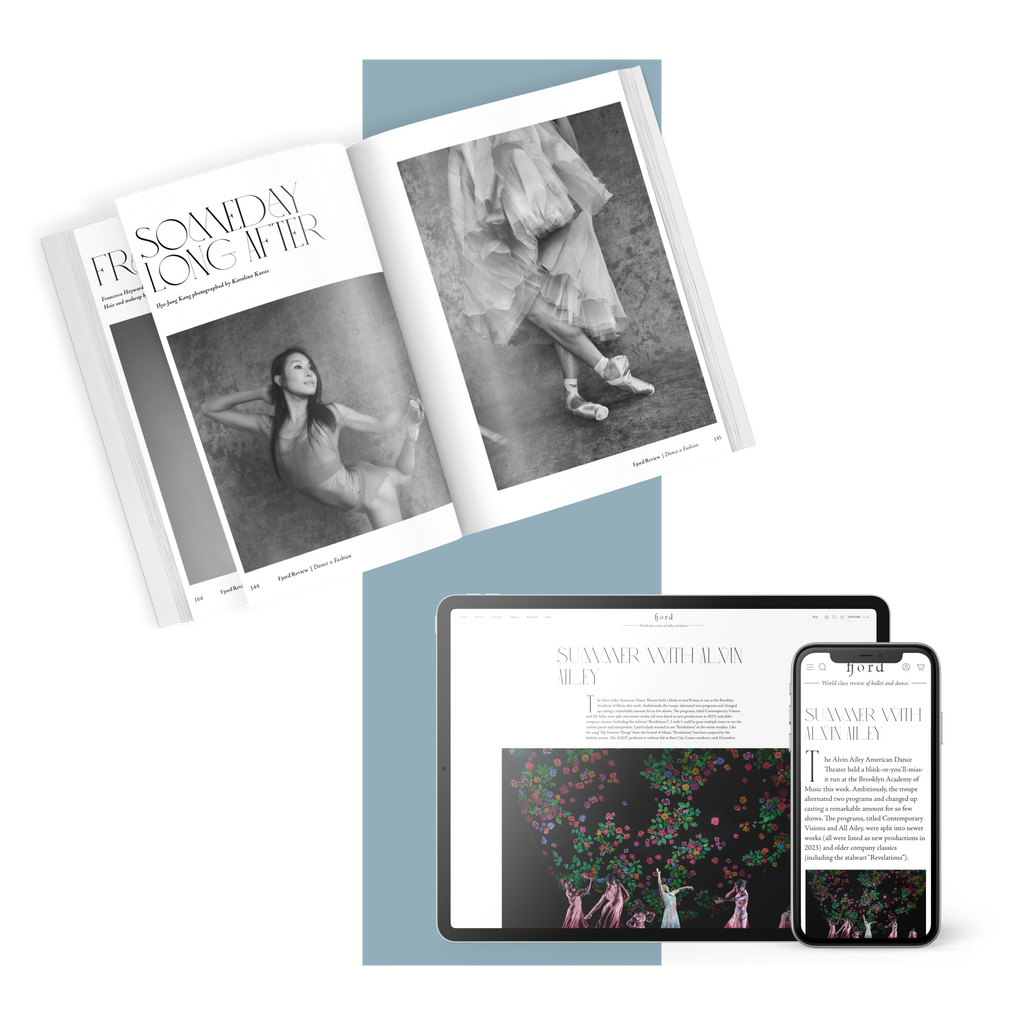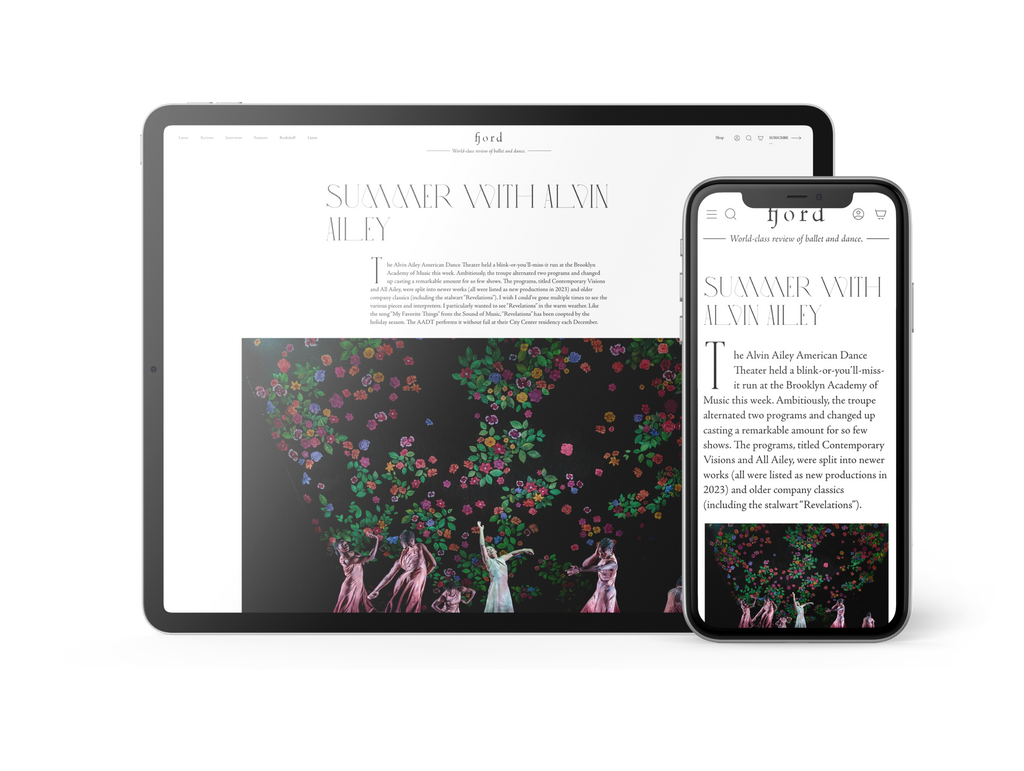Spellbound
Two performers crawl in on hands and knees wearing neon green, hooded coveralls—the lightweight papery kind made for working in a sterile environment—and clusters of balloons pinned to their backs.
Continue Reading
World-class review of ballet and dance.
Frederick Ashton’s much-loved “Rhapsody” is perhaps epitomised by the scene in which six male dancers hold the lead aloft and parade him around like a king, a ring of glittering ballerinas encircling the reverent display. The plotless ballet, created as a birthday present for the Queen Mother in 1980 and presented here as part of a double bill celebrating the Royal Ballet’s founding choreographer, is all about spectacle—in fact, Ashton specifically enlisted Mikhail Baryshnikov, Russian virtuoso extraordinaire, for the starring role to ensure the piece had a central spark powerful enough to ignite the blaze of majesty he envisioned.
Performance
Place
Words

Francesca Hayward and James Hay in Frederick Ashton's “Rhapsody.” Photograph by Helen Maybanks


“Uncommonly intelligent, substantial coverage.”
Your weekly source for world-class dance reviews, interviews, articles, and more.
Already a paid subscriber? Login
Two performers crawl in on hands and knees wearing neon green, hooded coveralls—the lightweight papery kind made for working in a sterile environment—and clusters of balloons pinned to their backs.
Continue ReadingWill Rawls makes boundaries visible by defying them. Known for the disciplinary and topical range of his projects, the choreographer, director, and performer approaches issues of representation in “[siccer],” a multi-part, multi-site work co-presented by L’Alliance New York’s Crossing the Line Festival. A live performance at Performance Space New York accompanies a multimedia installation at the Kitchen, a book published by Wendy’s Subway, and an album published by the artist. With a creative process reaching back to 2018, the work delves explicitly into pandemic-era energies and inertias with focused intimacy and a pervasive sense of instability.
Continue ReadingIt is always interesting when multiple theme steps emerge over the course of a mixed repertory evening, but it is uncanny on one featuring five different ballets, each with a different choreographer and composer, covering a twenty-year span (2005-2025).
Continue ReadingZvidance premiered its new work “Dandelion” mid-November at New York Live Arts. Founded by Zvi Gotheiner in 1989, Zvidance has been a steady presence in the New York contemporary dance scene, a reliable source of compositional integrity, and a magnet for wonderful dancers.
Continue Reading
comments